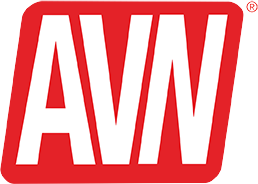Phone Virus Asks Permission to Infect
CYBERSPACE – A concept virus written to infect "smart phones" that use the Symbian operating system may not be as smart as its intended victims, according to virus researchers.
Called Cabir, the worm was designed to attack the dominant smart phone OS, but antivirus researchers who received an unreleased copy of it said Tuesday the worm won't get far in the real world because it doesn't execute automatically. In order to become infected, targeted users must approve a download from an unknown source. In addition, the user must agree to install the malware.
So far Cabir has not been seen in the wild. Antivirus researchers caution, however, that it may represent a jumping off point upon which other virus authors can base their own, more sophisticated malware threats.
"We see it as a pretty significant step forward," Vincent Gullotto, vice president of Network Associates' antivirus emergency response team, told CNet.
Privacy Concerns May Hang Up Cell Phone Directory
MENLO PARK, Calif. – A bipartisan bill now pending in the U.S. Senate may represent a significant snag for the wireless industry's plan to compile a national directory of cellular phone numbers.
Co-sponsored by Sens. Barbara Boxer (D-Calif.) and Arlen Specter (R-Pa.), the Wireless 411 Privacy Act would mandate that carriers have specific permission from consumers before submitting cell phone numbers to the directory. The senators admit privacy is not their only concern. They also want to ensure consumers aren't hit with huge telephone bills for airtime taken up by junk and telemarketing calls.
More than one third of Americans nationwide have unlisted home telephone numbers. Historically, westerners in Nevada, California, Arizona, Oregon, and Washington are the most zealous guardians of their land-line phone numbers. Some pay as much as $2.66 a month to keep their home telephone numbers private. Under the proposed bill, customers would not be required to pay a fee for keeping their cell phone numbers out of the directory.
The Cellular Telecommunications and Internet Association, which hopes to complete the directory by the end of the year, already has vowed not to sell the wireless directory to third parties, put it in printed form, or post it on the Internet.
Farms of the Future to be Wireless?
TIFTON, Ga. – Big-city technology may have a big-time impact on the way farms of the future are managed, according to a vision presented during a two-day conference sponsored here by a University of Georgia research laboratory.
Although urban professionals in many cities now take wireless connections and applications for granted, the technology has been slow to find a place of its own in rural America. That all could change within the next five years as farmers begin to employ wireless computer networks to control insects, drive tractors, monitor soil moisture, and feed livestock remotely from the comfort of their pickup trucks, according to Stuart Pocknee, leader of advanced technologies at UGA's Tifton lab.
At least two Georgia farmers are already using the technology. One uses wireless video to monitor vegetable packing; another relies on a wireless network to monitor irrigation systems. Pockney himself uses a wireless network to monitor a 600-foot irrigation system in a field half a mile away. The system is equipped with a global positioning system and a wireless video camera to provide images and information to Pockney's computer screen.
More States Enact Hands-free Cell Phone Laws
MORRISTOWN, N.J. – New Jersey motorists have until next week to get ready to comply with a new state law requiring drivers to use hands-free devices when talking on their wireless phones. Starting July 1, motorists could face a fine ranging between $100 and $250 for talking on wireless phones without using hands-free devices. A similar law also takes effect July 1 in Washington, DC, and already is in effect throughout New York State.
Verizon Wireless offers the following responsible driving tips:
Remember: Driving responsibly is always your first priority when behind the wheel.
Program important and frequently dialed numbers into your phone to take advantage of speed dialing and voice dialing features on your phone.
If traffic conditions prevent you from answering the phone safely, let calls go to your voicemail. You can retrieve your messages later.
Never take notes or write down phone numbers while driving. Instead, pull off the road to a safe spot or leave yourself a message on your voicemail or voice-memo-capable handset.
A headset allows you to keep both hands on the wheel when you need to use your wireless phone.
Consumers have a number of choices available to help them comply with the new law. In addition to universally compatible headsets, phones with built-in speakerphones and voice-activated dialing are available. The phone can be fastened easily to a car's vent or visor and removed when you leave the vehicle. No installation or hard wiring is necessary. Hands-free car kits, which provide a cradle for the phone and an external microphone, offer drivers another option for complying with the new law.
Rio Rancho Achieves a Wi-Fi First
RIO RANCHO, N.M. – On June 26, the City of Rio Rancho, in collaboration with Intel Corporation andUsurf Communications Inc., will launch one of the largest Wi-Fi hot-spots in the world to date. The installation will cover 103 square miles and boasts technology designed to bring unprecedented high-speed wireless data access to 58,000 residents and hundreds of businesses, government, and civic organizations.
According to the city, its installation is the first border-to-border, citywide Wi-Fi hotspot in the United States. To honor the achievement, Rio Rancho has incorporated a new slogan into its marketing materials: "Your Wireless Window to the World."
Linksys Debuts Wireless Range Expander
IRVINE, Calif. – Linksys, a division of Cisco Systems Inc., has released the Linksys Wireless-G Range Expander (WRE54G), which helps increase the effective coverage of a wireless network. The Range Expander adds more coverage area to wireless networks so wireless-enabled computers and other devices can be used in places where the Wi-Fi signal from the existing router or access point may not reach.
The Wireless-G Range Expander is compatible with both 802.11b and 802.11g networking devices and can cover areas in multi-story homes, small offices, warehouse environments, and wireless "hot spots" – anywhere additional coverage is needed for a wireless network. To help eliminate dead spots and reflective corners, the Range Expander can be placed within range of the network's main access point or wireless router, thereby enabling Wi-Fi signals to "bounce" out to wireless devices normally outside the range of the hub.
"Linksys recognizes that some networking situations require larger wireless coverage than our standard products provide," said Steve Troyer, director of product marketing for Linksys. "By adding a Linksys Wireless-G Range Expander to a network, users have the ability to reach those areas in their home or office that they were not able to reach before such as back house, basement, or attic."
Adding the Range Expander to a network is not complicated. Unlike adding a traditional access point to a network to expand wireless coverage, the Range Expander doesn't need to be connected to the network by a data cable. More coverage for the wireless network can be obtained in three easy steps:
1. Plug the product directly into a power outlet.
2. Adjust the direction of the antenna. For best results, place the device as high as possible.
3. Press the auto configuration button on the unit.
The range expander will then detect the available access point or wireless router and configure itself with the network.
The Wireless-G Range Expander is immediately available through major retailers, resellers, distributors and direct response for an estimated street price of $99.
Amtrak Keeps Commuters Connected
REDMOND, Wash. – Commuters along Amtrak's Northeast Corridor routes are able to stay connected to the Internet and office email at six of the busiest train stations thanks to a new high-speed wireless network installed by the rail carrier under a contract with AT&T Wireless. The stations are:
Boston Route 128 Station
Providence
New York Penn Station
Philadelphia 30th Street Station
Wilmington
Baltimore Penn Station
With more than one million weekday passengers, commuters, and visitors passing through the six stations, the new Wi-Fi service represents one of the largest single communications upgrades to the public rail system in the region.
"Amtrak is pleased to offer passengers another way to stay connected to their business and personal lives as they travel," said Sally Bellet, vice president of real estate development for Amtrak. "Whether it's email, a report for work, or balancing a bank account, people in our train stations can make more use of their time by using Wi-Fi services provided by AT&T Wireless."
Anyone with a working Wi-Fi-enabled laptop or PDA can access the system. Existing AT&T Wireless Wi-Fi customers simply enter their user credentials to go online. Users can also have their Wi-Fi charges appear on their wireless phone bills if they are existing AT&T Wireless customers. For $9.99, non-AT&T Wireless customers can connect to Wi-Fi service as often as they would like, from a single location, within a 24-hour period using a credit card.









